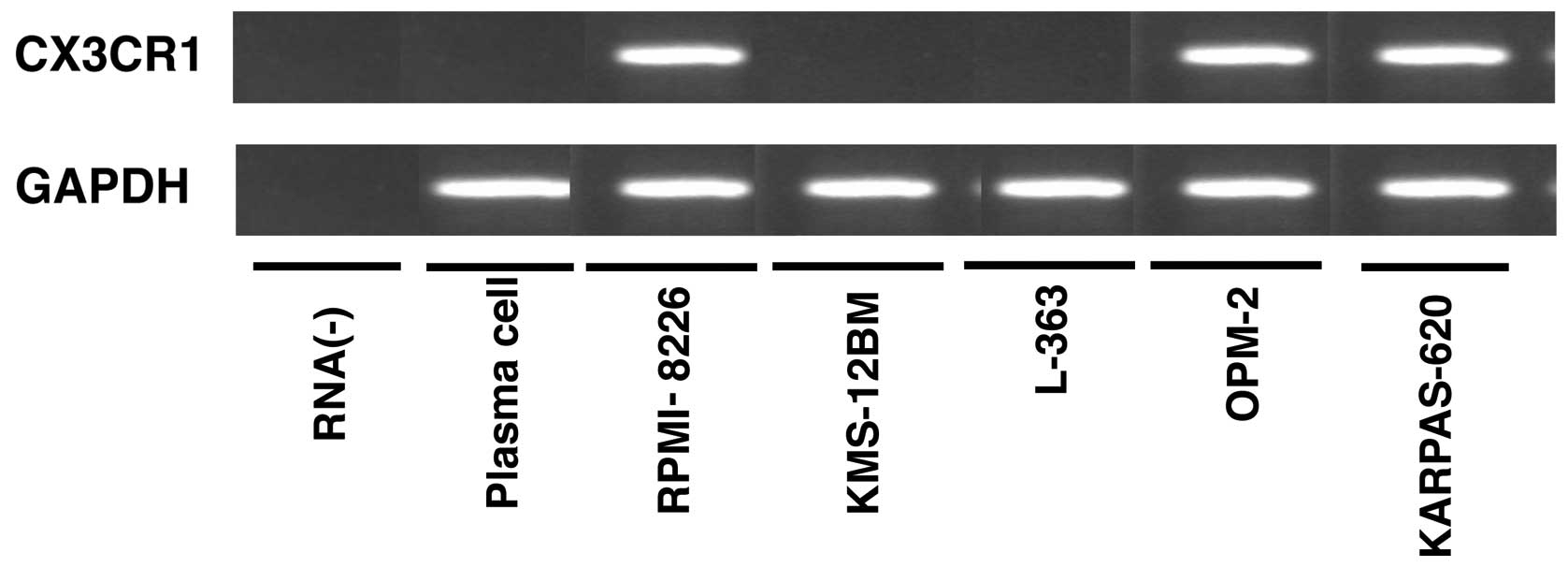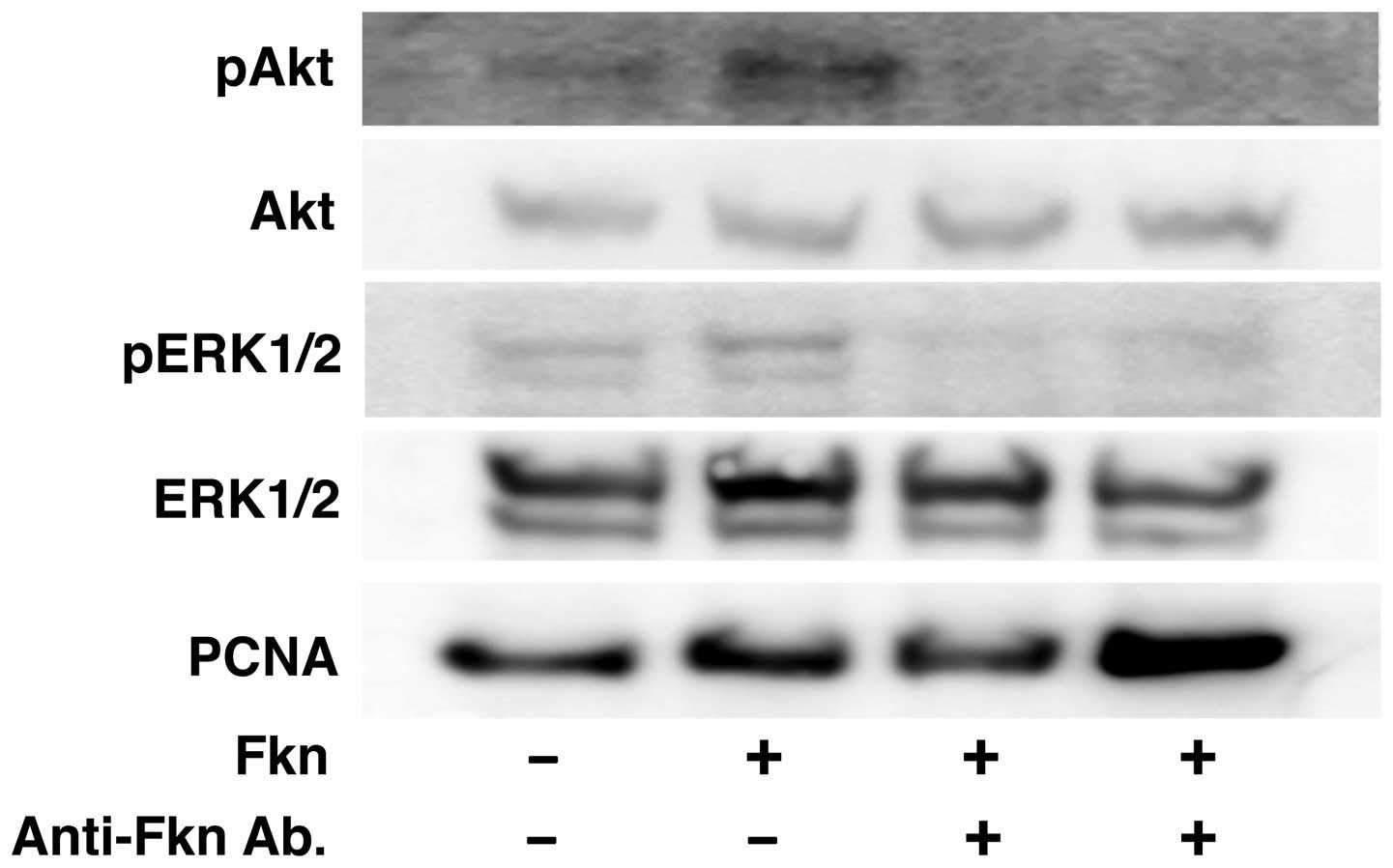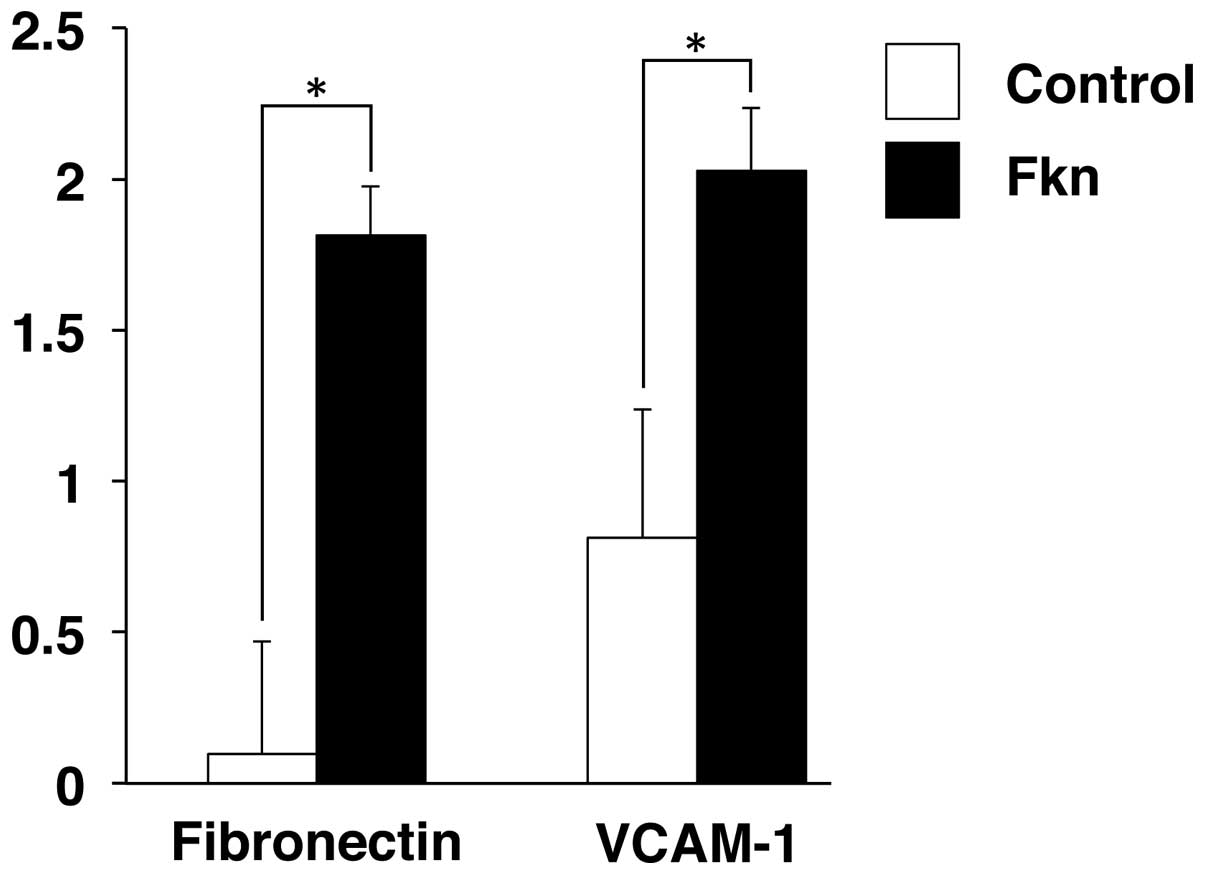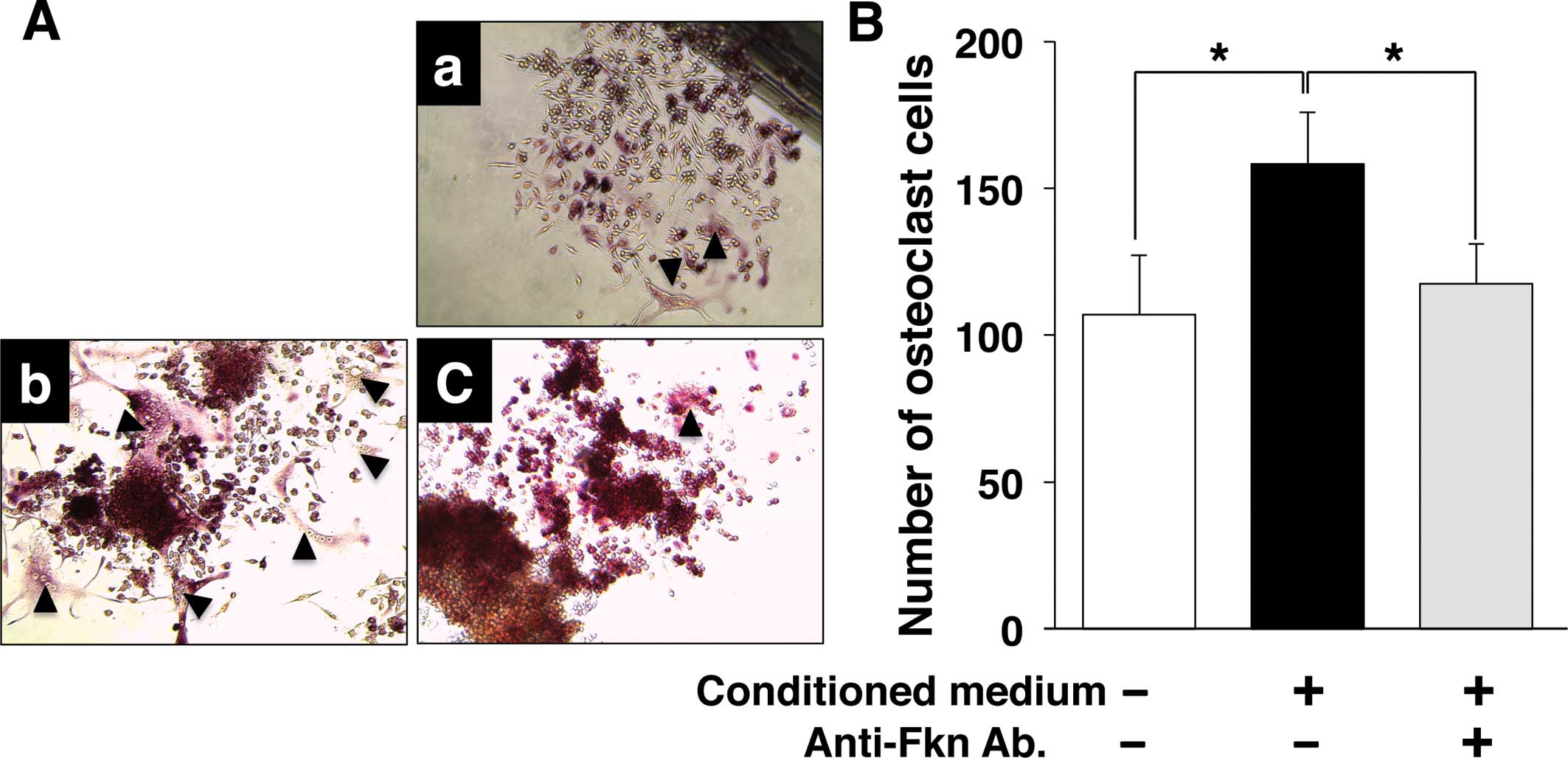|
1
|
Kyle RA and Rajkumar SV: Multiple myeloma.
N Engl J Med. 351:1860–1873. 2004. View Article : Google Scholar : PubMed/NCBI
|
|
2
|
Kristinsson SY, Landgren O, Dickman PW,
Derolf AR and Björkholm M: Patterns of survival in multiple
myeloma: A population-based study of patients diagnosed in Sweden
from 1973 to 2003. J Clin Oncol. 25:1993–1999. 2007. View Article : Google Scholar : PubMed/NCBI
|
|
3
|
Brenner H, Gondos A and Pulte D: Recent
major improvement in long-term survival of younger patients with
multiple myeloma. Blood. 111:2521–2526. 2008. View Article : Google Scholar
|
|
4
|
Kumar SK, Rajkumar SV, Dispenzieri A, Lacy
MQ, Hayman SR, Buadi FK, Zeldenrust SR, Dingli D, Russell SJ, Lust
JA, et al: Improved survival in multiple myeloma and the impact of
novel therapies. Blood. 111:2516–2520. 2008. View Article : Google Scholar
|
|
5
|
Baggiolini M: Chemokines and leukocyte
traffic. Nature. 392:565–568. 1998. View
Article : Google Scholar : PubMed/NCBI
|
|
6
|
Raffaghello L, Cocco C, Corrias MV,
Airoldi I and Pistoia V: Chemokines in neuroectodermal tumour
progression and metastasis. Semin Cancer Biol. 19:97–102. 2009.
View Article : Google Scholar
|
|
7
|
Pistoia V, Corcione A, Dallegri F and
Ottonello L: Lymphoproliferative disorders and chemokines. Curr
Drug Targets. 7:81–90. 2006. View Article : Google Scholar : PubMed/NCBI
|
|
8
|
Trentin L, Miorin M, Facco M, Baesso I,
Carraro S, Cabrelle A, Maschio N, Bortoli M, Binotto G, Piazza F,
et al: Multiple myeloma plasma cells show different chemokine
receptor profiles at sites of disease activity. Br J Haematol.
138:594–602. 2007. View Article : Google Scholar : PubMed/NCBI
|
|
9
|
Vallet S, Pozzi S, Patel K, Vaghela N,
Fulciniti MT, Veiby P, Hideshima T, Santo L, Cirstea D, Scadden DT,
et al: A novel role for CCL3 (MIP-1α) in myeloma-induced bone
disease via osteocalcin downregulation and inhibition of osteoblast
function. Leukemia. 25:1174–1181. 2011. View Article : Google Scholar : PubMed/NCBI
|
|
10
|
Bazan JF, Bacon KB, Hardiman G, Wang W,
Soo K, Rossi D, Greaves DR, Zlotnik A and Schall TJ: A new class of
membrane-bound chemokine with a CX3C motif. Nature.
385:640–644. 1997. View
Article : Google Scholar : PubMed/NCBI
|
|
11
|
Umehara H, Bloom ET, Okazaki T, Nagano Y,
Yoshie O and Imai T: Fractalkine in vascular biology: From basic
research to clinical disease. Arterioscler Thromb Vasc Biol.
24:34–40. 2004. View Article : Google Scholar
|
|
12
|
Fong AM, Robinson LA, Steeber DA, Tedder
TF, Yoshie O, Imai T and Patel DD: Fractalkine and
CX3CR1 mediate a novel mechanism of leukocyte capture,
firm adhesion, and activation under physiologic flow. J Exp Med.
188:1413–1419. 1998. View Article : Google Scholar : PubMed/NCBI
|
|
13
|
Imai T, Hieshima K, Haskell C, Baba M,
Nagira M, Nishimura M, Kakizaki M, Takagi S, Nomiyama H, Schall TJ,
et al: Identification and molecular characterization of fractalkine
receptor CX3CR1, which mediates both leukocyte migration
and adhesion. Cell. 91:521–530. 1997. View Article : Google Scholar : PubMed/NCBI
|
|
14
|
Shulby SA, Dolloff NG, Stearns ME, Meucci
O and Fatatis A: CX3CR1-fractalkine expression regulates cellular
mechanisms involved in adhesion, migration, and survival of human
prostate cancer cells. Cancer Res. 64:4693–4698. 2004. View Article : Google Scholar : PubMed/NCBI
|
|
15
|
Andre F, Cabioglu N, Assi H, Sabourin JC,
Delaloge S, Sahin A, Broglio K, Spano JP, Combadiere C, Bucana C,
et al: Expression of chemokine receptors predicts the site of
metastatic relapse in patients with axillary node positive primary
breast cancer. Ann Oncol. 17:945–951. 2006. View Article : Google Scholar : PubMed/NCBI
|
|
16
|
Marchesi F, Piemonti L, Fedele G, Destro
A, Roncalli M, Albarello L, Doglioni C, Anselmo A, Doni A, Bianchi
P, et al: The chemokine receptor CX3CR1 is involved in the neural
tropism and malignant behavior of pancreatic ductal adenocarcinoma.
Cancer Res. 68:9060–9069. 2008. View Article : Google Scholar : PubMed/NCBI
|
|
17
|
Andréasson U, Ek S, Merz H, Rosenquist R,
Andersen N, Jerkeman M, Dictor M and Borrebaeck CA: B cell
lymphomas express CX3CR1 a non-B cell lineage adhesion
molecule. Cancer Lett. 259:138–145. 2008. View Article : Google Scholar
|
|
18
|
Ferrer A, Ollila J, Tobin G, Nagy B,
Thunberg U, Aalto Y, Vihinen M, Vilpo J, Rosenquist R and Knuutila
S: Different gene expression in immunoglobulin-mutated and
immunoglobulin-unmutated forms of chronic lymphocytic leukemia.
Cancer Genet Cytogenet. 153:69–72. 2004. View Article : Google Scholar : PubMed/NCBI
|
|
19
|
Nakayama T, Hieshima K, Izawa D, Tatsumi
Y, Kanamaru A and Yoshie O: Cutting edge: Profile of chemokine
receptor expression on human plasma cells accounts for their
efficient recruitment to target tissues. J Immunol. 170:1136–1140.
2003. View Article : Google Scholar : PubMed/NCBI
|
|
20
|
Hojo S, Koizumi K, Tsuneyama K, Arita Y,
Cui Z, Shinohara K, Minami T, Hashimoto I, Nakayama T, Sakurai H,
et al: High-level expression of chemokine CXCL16 by tumor cells
correlates with a good prognosis and increased tumor-infiltrating
lymphocytes in colorectal cancer. Cancer Res. 67:4725–4731. 2007.
View Article : Google Scholar : PubMed/NCBI
|
|
21
|
Manier S, Sacco A, Leleu X, Ghobrial IM
and Roccaro AM: bone marrow microenvironment in multiple myeloma
progression. J Biomed Biotechnol. 2012:1574962012. View Article : Google Scholar : PubMed/NCBI
|
|
22
|
Saitoh Y, Koizumi K, Sakurai H, Minami T
and Saiki I: RANKL-induced down-regulation of CX3CR1 via PI3K/Akt
signaling pathway suppresses Fractalkine/CX3CL1-induced cellular
responses in RAW264.7 cells. Biochem Biophys Res Commun.
364:417–422. 2007. View Article : Google Scholar : PubMed/NCBI
|
|
23
|
Koizumi K, Saitoh Y, Minami T, Takeno N,
Tsuneyama K, Miyahara T, Nakayama T, Sakurai H, Takano Y, Nishimura
M, et al: Role of CX3CL1/fractalkine in osteoclast differentiation
and bone resorption. J Immunol. 183:7825–7831. 2009. View Article : Google Scholar : PubMed/NCBI
|
|
24
|
International Myeloma Working Group:
Criteria for the classification of monoclonal gammopathies,
multiple myeloma and related disorders: A report of the
International Myeloma Working Group. Br J Haematol. 121:749–757.
2003. View Article : Google Scholar : PubMed/NCBI
|
|
25
|
Durie BG and Salmon SE: A clinical staging
system for multiple myeloma. Correlation of measured myeloma cell
mass with presenting clinical features, response to treatment, and
survival. Cancer. 36:842–854. 1975. View Article : Google Scholar : PubMed/NCBI
|
|
26
|
Eychène A, Rocques N and Pouponnot C: A
new MAFia in cancer. Nat Rev Cancer. 8:683–693. 2008. View Article : Google Scholar
|
|
27
|
Morito N, Yoh K, Maeda A, Nakano T, Fujita
A, Kusakabe M, Hamada M, Kudo T, Yamagata K and Takahashi S: A
novel transgenic mouse model of the human multiple myeloma
chromosomal translocation t(14;16)(q32;q23). Cancer Res.
71:339–348. 2011. View Article : Google Scholar : PubMed/NCBI
|
|
28
|
Murphy G, Caplice N and Molloy M:
Fractalkine in rheumatoid arthritis: A review to date.
Rheumatology. 47:1446–1451. 2008. View Article : Google Scholar : PubMed/NCBI
|
|
29
|
Nanki T, Urasaki Y, Imai T, Nishimura M,
Muramoto K, Kubota T and Miyasaka N: Inhibition of fractalkine
ameliorates murine collagen-induced arthritis. J Immunol.
173:7010–7016. 2004. View Article : Google Scholar : PubMed/NCBI
|














